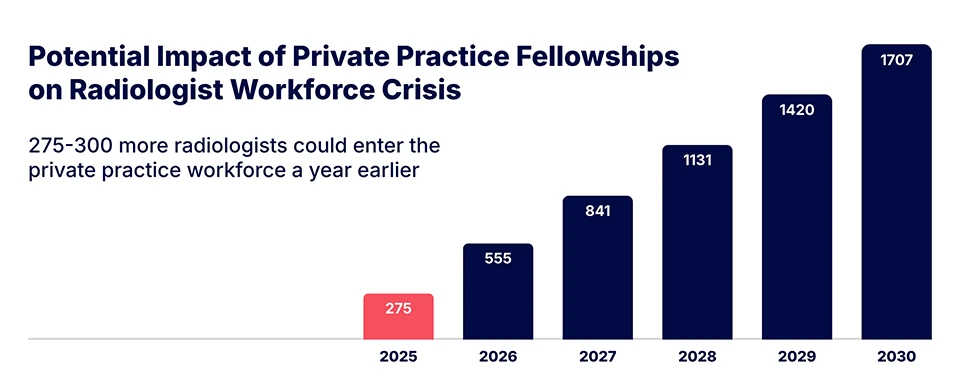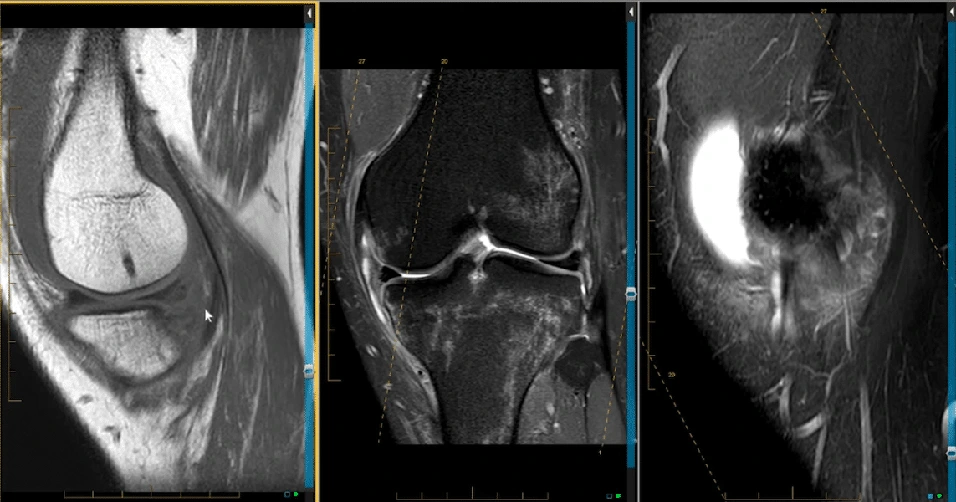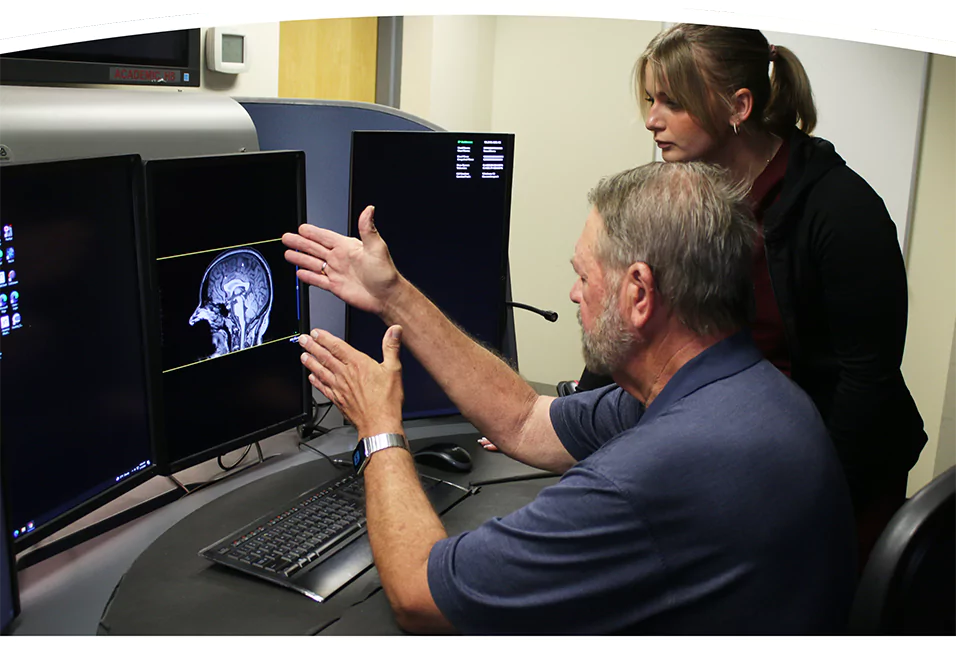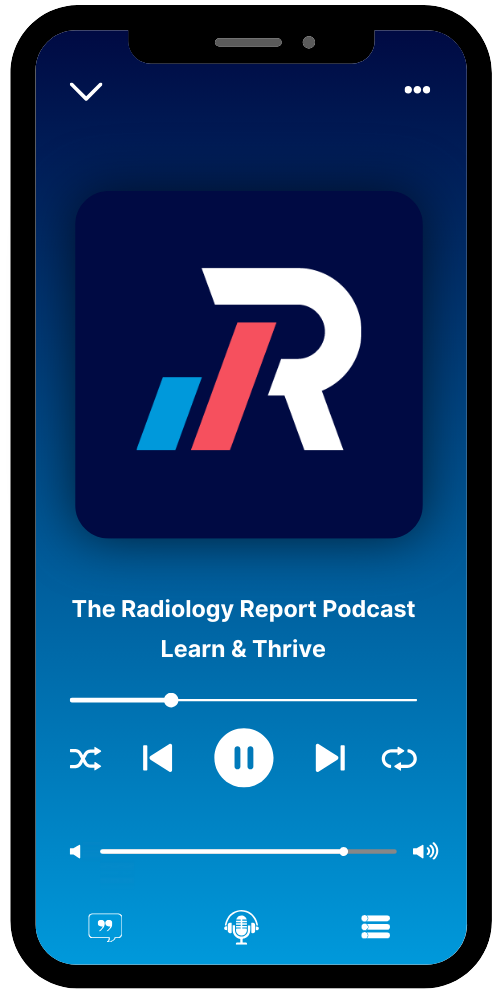The radiology field is currently grappling with a significant workforce shortage that threatens to impact patient care and the overall sustainability of the profession. A complex interplay of factors:
- An aging population
- Increased demand for imaging services
- And a limited pipeline of new radiologists entering the field
All of which are driving the ongoing problem. Exploring creative strategies can help alleviate the shortage while maintaining high-quality patient care. Offering flexible roles, providing ongoing training opportunities, and implementing non-exclusive agreements are some innovative solutions that attract and retain radiologists by addressing key concerns. Radiology practices can potentially expand their talent pool, improve job satisfaction, and ultimately provide better coverage for patient needs by adopting these approaches.
These strategies offer promising avenues for improvement. However, they should be considered as part of a broader effort to strengthen the radiology workforce to meet the needs of an evolving healthcare landscape.
How does offering flexible roles address the radiology workforce shortage?
Offering flexible roles is one of the most creative and effective approaches for addressing the radiology workforce shortage because it caters to the diverse needs and preferences of radiologists at all career levels. Flexibility can include remote work options, teleradiology, and being open to hiring 1099 contract radiologists to fill the gaps.
Flexible Scheduling
Offering flexible scheduling options is a power move for attracting and retaining radiologists of all skill levels. Part-time positions, job-sharing arrangements, and flexible hours can significantly enhance work-life balance, making radiology careers more attractive.
Part-time positions allow radiologists to maintain their careers while pursuing other interests or managing personal commitments. This option is particularly attractive to those seeking a phased retirement or professionals with family responsibilities.
Women are especially more appreciative of flexible work arrangements because they remove barriers to career advancement by negotiating workloads more efficiently.
Teleradiology and Other Remote Work Options
The adoption of teleradiology has revolutionized the way radiologists work, offering unprecedented flexibility and expanding the available talent pool. Remote work options have become increasingly popular and are likely to remain a sought-after perk.
Teleradiology allows radiologists to interpret medical images from remote locations. Additionally, remote work options can improve accessibility for radiologists with mobility issues that make going to a private practice or healthcare facility difficult.
This approach also significantly expands the pool of potential candidates, allowing healthcare facilities and radiology practices to tap into talent from other regions and countries. Remote hiring can also help address staffing shortages in underserved areas by providing access to specialized radiologists who may not be available locally.
1099 Contract Radiologists
Incorporating 1099 contractors or independent radiologists into the workforce can provide additional flexibility for facilities and radiology professionals. The arrangement allows radiologists to work for multiple practices and healthcare facilities, potentially increasing their earnings and providing diverse work experience.
For healthcare facilities and radiology practices, using contractors can help manage fluctuating workloads and provide access to specialized expertise without the commitment of full-time employment.
Can ongoing training opportunities reverse the radiologist shortage?
Ongoing training opportunities can help reverse the radiologist shortage by maintaining a skilled and engaged workforce. As technology advances and new imaging techniques emerge, radiologists must continually update their knowledge and skills to provide the highest level of patient care.
Offering continuing education programs helps radiologists stay current with advancements in imaging modalities such as artificial intelligence applications in radiology, new MRI sequences, and advanced CT protocols. Regular training also helps radiologists adapt to changing regulatory requirements and best practices in radiation safety. Healthcare facilities and radiology practices demonstrate their commitment to excellence and professional growth by providing ongoing training.
“Medality’s continuing education is top-notch and user-friendly for our radiologists,” said Todd Howard, a physician recruitment manager at Radiology Associates of North Texas. “The service has been invaluable for Radiology Associates of North Texas, P.A., helping us meet the growing imaging demands in a competitive recruitment environment by enhancing the skill sets of our team.”
Private Practice Fellowships
Radiology private practice fellowships have emerged as an innovative solution to address the ongoing radiologist shortage while providing valuable training opportunities. These programs play a crucial role in attracting and retaining talent.
Remote fellowship programs allow radiologists to enhance their skills and subspecialize without the need to relocate or take extended time off from their current positions. This flexibility makes advanced training more accessible to a wider range of professionals, including those with family commitments or geographic constraints.
“The concept of a private practice fellowship is an intriguing idea that could help address workforce challenges that worsen every year as imaging volumes continue to increase,” said Deanna M. Heier, Ph.D., Head of Educational Strategy and Operations at Medality. “It could also give residents who are interested in private practice jobs a pathway to enter the workforce sooner, while still providing them with high-quality, in-depth training in the most relevant areas they will need for their future practice.”
What’s the role of non-exclusive agreements in addressing the radiologist shortage?
The radiology field is evolving rapidly, challenging traditional employment models with new approaches that offer greater flexibility and opportunities for healthcare facilities and radiologists. One such innovative strategy is the implementation of non-exclusive agreements. These arrangements can help address the radiologist shortage by creating more dynamic and adaptable working relationships between radiologists and the healthcare facilities and radiology practices they serve.
Non-exclusive agreements allow radiologists to work for multiple facilities, creating a more flexible and collaborative environment in the healthcare ecosystem. It’s especially beneficial for smaller facilities or those in underserved areas that struggle to attract full-time, high-quality radiologists.
Offering non-exclusive agreements can help:
- Access a wider pool of radiologist talent without the commitment of full-time employment.
- Adjust staffing levels more easily to meet fluctuating demand.
- Benefit from specialized expertise that might be too costly to maintain full-time.
Non-exclusive agreements are a game changer for smaller facilities and radiology practices, giving them access to high-quality radiologists who might otherwise be out of reach due to budgetary constraints or geographical limitations.
Moreover, these arrangements can foster collaboration between different healthcare facilities. Radiologists working across sites can facilitate knowledge sharing, standardization of best practices, and potentially even resource sharing between facilities.
Benefits for radiologists
Besides creating flexibility, non-exclusive agreements have other benefits for radiologists. One of the most notable advantages is the opportunity to enjoy diverse work experiences. Radiologists can encounter a wider range of cases, technologies, and clinical environments by working with multiple facilities. The variety can contribute to their professional growth and job satisfaction.
Other benefits for radiologists include:
- Potential for higher earnings. Non-exclusive agreements often allow radiologists to maximize their earning potential by taking on additional work at different facilities or during periods of high demand.
- Better work-life balance. The ability to create a more flexible schedule can help radiologists achieve a better work-life balance, potentially reducing burnout and improving overall job satisfaction.
- Autonomy in career decisions. These arrangements give radiologists more control over their career paths, allowing them to choose assignments that align with their interests and goals.
Paving the way for a sustainable radiology future
The radiologist shortage presents a significant challenge to healthcare systems and radiology practices. However, innovative strategies can help mitigate the impact to create a more sustainable workforce. Offering flexible roles, providing ongoing training opportunities, and implementing non-exclusive agreements allow radiology practices and healthcare facilities to attract and retain top-notch radiologists and improve patient outcomes.
Flexible scheduling and remote work options cater to the diverse needs of radiologists, allowing them to achieve a better work-life balance. Ongoing training (including private practice fellowships) enhances their skills and keeps them engaged in their profession. Non-exclusive agreements foster collaboration and provide radiologists with the autonomy and variety they seek in their careers.
Radiology practices aiming to thrive in a competitive environment must embrace these creative solutions. Prioritizing the needs of radiologists and adapting to the changing dynamics of the workforce helps build a resilient future that addresses the current shortage and meets the demands of tomorrow’s workforce challenges.
Sources
- Radiology Facing a Global Shortage. Rsna.org. Accessed October 16, 2025.
- Flexible work arrangements and their impact on women in radiology…clinicalimaging.org. Accessed October 16, 2025.
- Work expectations, their fulfillment, and exhaustion among radiologists of all career levels: what can be learned from the example of Germany. pmc.ncbi.nlm.nih.gov. Accessed October 16, 2025.




